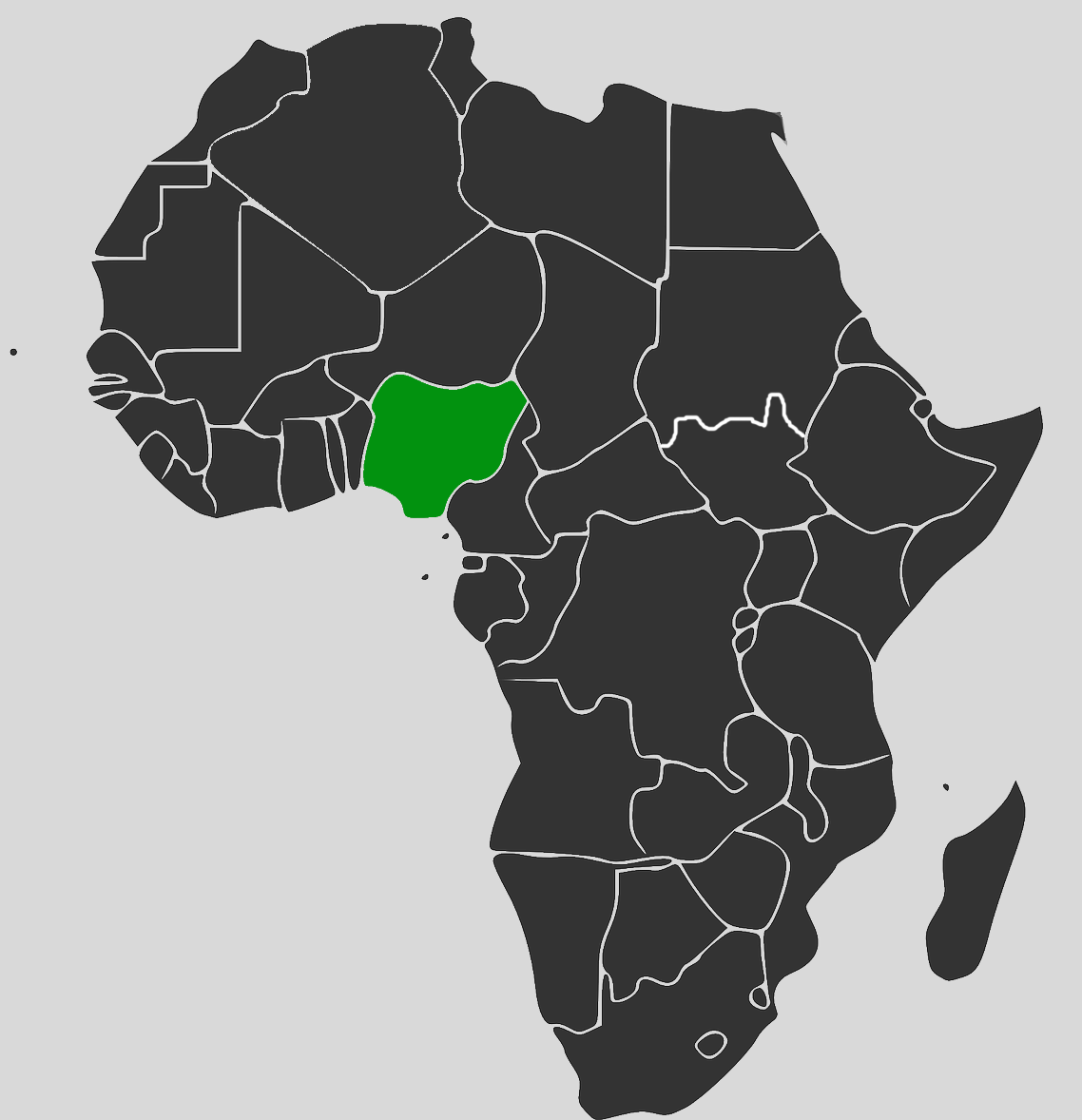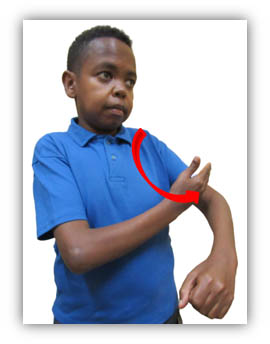Federal Republic of Nigeria
Total Population
206 million
Deaf Population
600,000-1 million
Nation's Official Language
English; Hausa, Yoruba, Igbo, Fulani (national languages)
Other Languages
The number of established languages listed in Ethnologue is 531. Some of these are:
- Abnyom
- Adara
- Agoi
- Alago
- Arabic
- Basa
- Bata
- Bekwarra
- Bokyi
- Cishingini
- Duguri
- Duya
- Dza
- Ebira
- Edo
- Efik
- Eggon
- Eloyi
- Epie
- Etsako
- Ezaa
- Fulfilde, Nigerian
- Gbari
- Gera
- Lbibio
- Idoma
- Ikwo
- Isekiri
- Isoko
- Kamwe
- Kanuri, Yerwa
- Khana
- Kofyar
- Koro Wachi
- Koro Zuba
- Kuce
- Kukele
- Kulung
- Kurama
- Kyanga
- Lamang
- Legbo
- Lenyima
- Longuda
- Mada
- Mbula-Bwazza
- Ndoola
- Ngamo
- Ngas
- Obolo
- Ogbah
- Pangu
- Pero
- Pidgin, Nigerian
- Reshe
- Tarok
- Tee
- Tera
- Tiv
- Tsikimba
- Tsishingini
- Ukaan
- Urhobo
- Warji
- Yala
- Zari
Name of Sign Language
Nigerian Sign Language (NSL)
Overview Of Deaf Community And Education
The first deaf school in Nigeria was established in Lagos in 1957 by a small group of Nigerians. In 1960 Andrew Forster and the Christian Mission for the Deaf established several schools. American Sign Language (ASL) was thus introduced to the Nigerian Deaf Community. ASL was first used at the Ibadan Mission School for the Deaf in 1974. The first school for deaf (and blind) children in Northern Nigeria was established in 1977. The first deaf school in Southeast Nigeria was established in 1983.
Today, there are many schools for the Deaf, special education centers and deaf units established within regular schools, owned and run by the government and some others owned by private organizations and missionary bodies. Nigeria also houses an international training center for deaf school teachers in Ibadan, which was set up by Rev. Foster and the Christian Mission for the Deaf. Together with a similar facility in Congo, the center has played a pivotal role in training a large number of deaf teachers from many different countries in Africa.
The Deaf community is reported as feeling, however, that progress in deaf education has stagnated over the last years.
Sign Language Overview
There are still many deaf people who are not exposed to a sign language and use a form of home signing. Several different sign languages are however used. In most deaf schools, Nigerian Sign Language is used, which is based on the variety of American Sign Language introduced by Rev. Foster.
However, little to no research has been done on Nigerian Sign Language and its relation to present-day American Sign Language or its regional variation. There seems to be a discernible influence of Signed English on Nigerian Sign Language.
Hausa Sign Language, or Maganar Hannu, is used by the Deaf community in Kano, Northern Nigeria. This locally evolved sign language has been studied extensively by Constanze Schmaling, who in 2000 published a monograph with a descriptive analysis of a large number of aspects of the language393 as well as a number of articles and book chapters. Currently, a series of lexicon booklets are being produced by the same author. Hausa SL is partly used in schools for the deaf (but only if teachers have contact with the Deaf community). It is also used in adult education classes for deaf adults and in classes for deaf children. According to Schmaling, the vitality of Hausa Sign Language can be qualified as vigorous on the scale of Bickford et al. (2014).
Other Nigerian sign languages that have evolved locally have been studied less extensively. Ọlanikẹ Ọla Orie has published several papers on Yoruba Sign Language and most recently in 2013. She studied the form used by among others by small, gender-based groups of deaf Youruba men and women. She describes how Yoruba Sign Language is closely tied to the conventional gestures of hearing Yoruba, while at the same time having restructured specific aspects, such as the numerals.
Roger Blench encountered a group deaf and hearing signers in the Bura speaking area who were using a local sign language that he named Bura Sign Language. He and Warren describe a number of signs including 12 signs for various bank notes.
Little to no information is available for Igbo or Southeastern Sign Language. According to Asonye, the vitality of Southeastern Sign Language can be qualified as threatened on the scale of Bickford et al. 2014.
No sign language has been recognized by the government so far, but some universities offer Deaf Studies, which involves sign language acquisition and training. These include the University of Jos (UNIJOS) and the University of Lorin (UNILORIN), where sign language research is done as well. Nigerian Sign Language is taught at the Federal College of Special Education in OYO, UNIJOS and UNILORIN as part of the special education curriculum. Churches and other religious organizations are also involved in sign language teaching as well. Some deaf people teach their own relatives how to sign. There are sign language courses for parents in Southeastern sign language.
Deaf Organizations In Country
- Nigerian National Association of the Deaf
- Nigerian Sign Language Interpreters Association (NSLIA)
Overview of Interpreting Services
There is an association for sign language interpreters (probably for Nigerian Sign Language), who coordinate interpretation. For Hausa Sign Language, a small number of volunteer interpreters is available. For Southeastern Sign Language, a very few qualified interpreters are available, but no volunteer interpreters.
There is a regular appearance of Nigerian Sign Language on TV, with various programs signed or interpreted into Nigerian Sign Language on TV. This includes news broadcasts, but also national health campaigns for example. This does not seem to be the case for any of the other sign languages of the country.
Resources
Ajavon, P. A. 2003. The incorporation of Nigerian signs in deaf education in Nigeria: A pilot study (Vol. 881). Peter Lang Pub Incorporated. Google Scholar.
Asonye, Emmanuel Ihechi, Emma-Asonye, Ezinne, Edward, Mary. 2018. Deaf in Nigeria: A Preliminary Survey of Isolated Deaf Communities. Sage Journal. https://doi.org/10.1177/2158244018786538
Eleweke J., Agboola I., Guteng S. 2015. Reviewing the pioneering roles of Gallaudet university alumni in advancing deaf education and services in developing countries: Insights and challenges from Nigeria. American Annals of the Deaf, 160, 75-83.
Ọlanikẹ Ọla Orie. 2013. From Conventional Gestures to Sign Language: The Case of Yoruba Sign Language. Selected Proceedings of the 43rd Annual Conference on African Linguistics
Schmaling, Constanze. 2000. Maganar hannu: Language of the hands. A Descriptive Analysis of Hausa Sign Language. Hamburg: Signum.
Schmaling, Constanze. 2001. ASL in northern Nigeria: Will Hausa Sign Language survive? In Signed languages: Discoveries from international research, ed. by V. Dively, M. Metzger, S. Taub, A.M. Baer. Washington, DC: Gallaudet University Press, 180-193.
Schmaling, Constanze. 2003. A for Apple: The impact of Western education and ASL on the deaf community in Kano State, northern Nigeria. In Many ways to be deaf: International variation in Deaf communities, ed. by L. Monaghan, C. Schmaling, K. Nakamura, G. Turner. Washington, DC: Gallaudet University Press, 302-310.
Schmaling, Constanze H. 2015. Hausa Sign Language. In Sign Languages of the world, ed. J. Bakken
List of Contributors
Constanze Schmaling, Emmanuele Asonye, Adewale Adeyanju, Victoria Nyst




